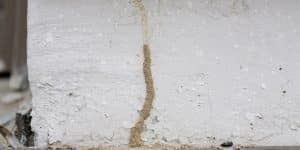Termite infestations can silently wreak havoc on your property’s structural integrity. In this comprehensive guide, we will explore the signs and symptoms of termite presence, and most importantly, provide effective solutions to protect your home. Join us as we shed light on the secret world of termites and empower you with the knowledge to safeguard your most valuable investment.
Contents
The Hidden Threat: Understanding Termites
What Are Termites?
Termites, often confused with ants, are far from harmless. These social insects have an insatiable appetite for cellulose-based materials, particularly wood. They are categorized into three primary castes within their colonies:
- Workers: The backbone of the colony, workers are responsible for foraging food and maintaining the nest.
- Soldiers: Equipped with large jaws, soldiers defend the colony against potential threats.
- Reproductives: These termites ensure the colony’s survival by reproducing and establishing new colonies.
Common Termite Types
While there are over 2,000 termite species globally, in the United States, three main types are frequently encountered:
- Subterranean Termites: These termites dwell underground and construct mud tunnels to access your home, making them a significant threat to homeowners.
- Drywood Termites: As the name implies, drywood termites infest dry, undecayed wood and do not rely on contact with soil. They often go unnoticed until substantial damage occurs.
- Dampwood Termites: Attracted to damp and decaying wood, dampwood termites thrive in high-humidity environments.
The Termite Life Cycle
Termites undergo a complex life cycle that includes egg, nymph, and adult stages. Reproductive termites swarm to create new colonies. Understanding this cycle is crucial for effective termite control.
Detecting the Invaders
Signs and Symptoms of Termite Infestation
Recognizing termite infestations early is paramount to prevent extensive damage. Look out for these common indicators:
- Mud Tubes: Subterranean termites build mud tubes on surfaces to protect themselves from predators and maintain moisture levels.
- Discarded Wings: After swarming, termites shed their wings, leaving them behind near windows and doors.
- Wood Damage: Hollowed or damaged wood is a clear sign of termite activity. A telltale sign is a hollow sound when tapping on wood.
Spotting Termite Damage
The extent of termite damage varies depending on the type of infestation. Drywood termites leave small holes and fecal pellets, while subterranean termites create galleries within the wood. Regular inspections are essential to catching these signs early.
Prevention and Solutions
Termite-Resistant Building Materials
During construction or renovation, consider using termite-resistant materials like pressure-treated wood or steel framing. These materials are less susceptible to termite damage.
Regular Professional Inspections
Routine inspections by professionals, such as those at Arizona Termite Control Company, can detect termite activity early. Inspectors identify vulnerabilities and recommend necessary treatments.
Moisture Control
Termites are drawn to moisture. Ensure proper drainage and repair any leaks in your home. Installing a vapor barrier in crawl spaces can help reduce moisture levels, making your home less attractive to these invaders.
Handling Termite Infestations
DIY Termite Control
While professional termite control is often necessary, some homeowners may attempt DIY solutions. Common DIY termite control methods include:
- Boric Acid: Applied to affected areas, boric acid can kill termites.
- Orange Oil: This natural remedy contains a compound toxic to termites and can be used as a deterrent.
The Benefits and Drawbacks
DIY termite control methods may offer temporary relief, but they are not always effective in eradicating the entire termite colony. Professional treatment is recommended for complete peace of mind.
When to Call the Experts
If you suspect or confirm a termite infestation, it’s crucial to contact professionals promptly. Delaying treatment can lead to more extensive damage and higher repair costs.
Professional Termite Control Methods
Experienced termite control companies, like Arizona Termite Control Company, offer various methods to eliminate termites, including:
- Liquid Termiticides: Applied to the soil around your home, creating a barrier to protect against termite intrusion.
- Bait Systems: Strategically placed to attract and kill termites.
- Fumigation: Tenting your home and using gas to eradicate termites.
Frequently Asked Questions
What Attracts Termites?
Termites are primarily drawn to wood and moisture. Cellulose-based materials like paper and cardboard can also attract them.
Are Termites Harmful to Humans?
While termites are not directly harmful to humans, their presence can lead to significant property damage, resulting in costly repairs.
Can I Get Rid of Termites Myself?
Although DIY methods are available, professional termite control is often more effective and ensures the complete elimination of the colony.
How Much Does Termite Control Cost?
The cost of termite control varies based on factors such as the extent of infestation and the chosen treatment method. For a personalized quote, contact Arizona Termite Control Company.
Why Choose Arizona Termite Control Company?
With years of experience, Arizona Termite Control Company has been safeguarding homes and businesses in the region. Our state-of-the-art techniques and unwavering commitment to customer satisfaction guarantee effective termite control.
For termite troubles, contact us today at 480-660-3093 or visit our website to request service. Don’t let these silent invaders destroy your property; take action now to protect your valuable investment.




